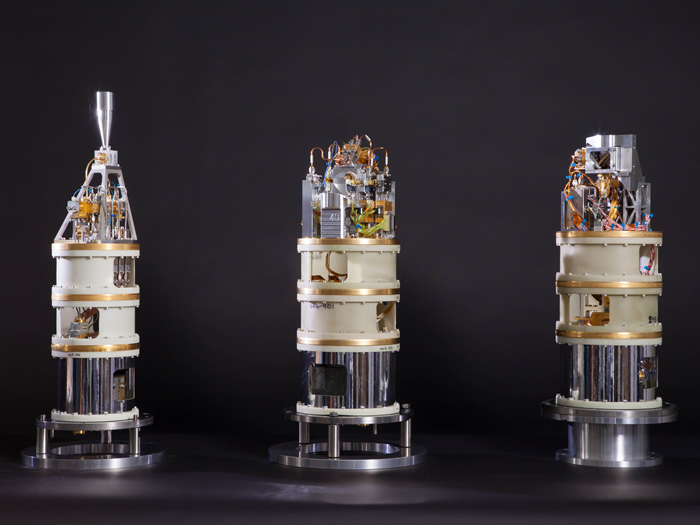ALMA Superconducting Receiver Cartridge
Photo・

| Camera | Canon EOS 5D Mark II |
|---|---|
| Location | NAOJ Advanced Technology Center |
| Photographer | Masaaki Hiramatsu (NAOJ Chile Observatory) |
| Credit | ALMA (ESO/NAOJ/NRAO) |
Photo・

| Camera | Canon EOS 5D Mark II |
|---|---|
| Location | NAOJ Advanced Technology Center |
| Photographer | Masaaki Hiramatsu (NAOJ Chile Observatory) |
| Credit | ALMA (ESO/NAOJ/NRAO) |
NAOJ developed 3 types of superconducting receivers for ALMA (the Atacama Large Millimeter/submillimeter Array). The radio waves observed by ALMA are divided into 10 bands, each with specialized receives developed in various countries. Japan is responsible for three bands: Band 4 (receiver frequency 125~163 Gigahertz), Band 8 (385~500 Gigahertz), and Band 10 (787~950 Gigahertz). The NAOJ Advanced Technology Center became the base for development and production of these receivers. This picture shows the condition of the 3 band assemblies before being shipped to Chile. (From the left Bands 4, 8, and 10)
The receivers convert the radio waves collected by the parabolic antenna into electronic signals. The receivers are installed in the “neck” portion of the antenna. Using the human eye as a model, the parabolic antenna would be the lens and the receivers would correspond to the retina cells. The ALMA receivers required cutting edge technology like superconducting materials development and precision small-scale metal manufacturing.
All 66 of ALMA’s antennas have receivers for each frequency band installed in them. Which means that NAOJ needed to produce: 66 antennas x 3 bands = 198 receivers. (Actually, including spares we had to produce 73 x 3 = 219 receivers.) This was the first time NAOJ had attempted mass production. Thanks to the experienced staff assembled, all production was completed in 2013. The mass produced receivers have already been shipped to Chile where they are being installed in the antennas.
(Author: Masaaki Hiramatsu, NAOJ Chile Observatory)